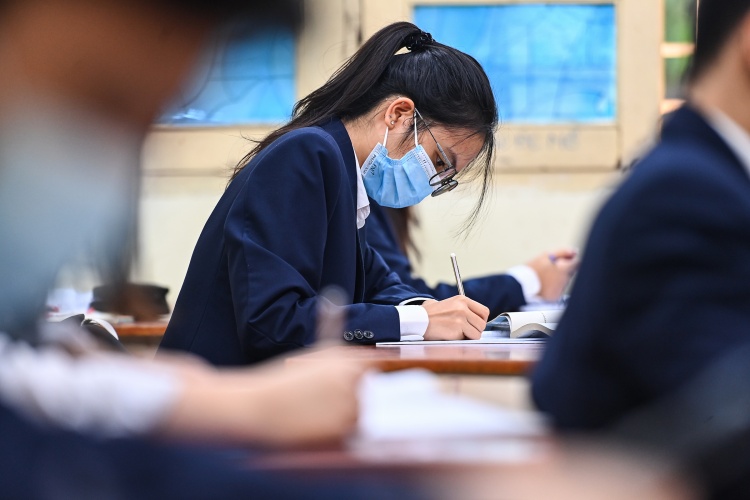A household survey that sought to measure the nation’s high school completion rate for the first time found that it was just 58.1 percent in early 2021.
The survey described the figure as the “percentage of children aged 3-5 years above the intended age for the last grade who have completed that grade.”
The completion rate among Vietnamese students was lowest at the high school level, compared to the secondary (86.8 percent) and primary (98.3 percent) levels, according to the Vietnam Sustainable Development Goals (SDGs) on Children and Women Survey 2020-2021.
The survey, carried out by the General Statistics Office and UNICEF between late 2020 and early 2021, polled more than 14,000 households across the country.
It found that the high school completion was highest in the Red River Delta at 76.5 percent and lowest in the Central Highlands at 31 percent. The proportions of other regions were: 64.6 percent in the north central region and central coast, 60.8 percent in the southeast region that includes HCMC, 43.1 percent in the Mekong Delta, and 41.7 percent in the northern midland and mountainous area.
 |
|
A high school student in Hanoi, December 2021. Photo by VnExpress/Giang Huy |
Nguyen Quynh Trang, Planning, Monitoring and Evaluation Specialist, UNICEF, told VnExpress International that it was the first time Vietnam and its partners have surveyed the graduation completion rate for high school students.
It was being done because Vietnam is obliged to measure it according to international standards for all countries that have to achieve their SDGs by 2030, he explained.
Vietnam has targeted universalizing education until the secondary level and not higher because of budgetary constraints, he added.
This indicator (high school completion rate) will be continuously surveyed from now until 2030.
Researchers said the completion rates at high school and secondary school levels were directly proportional to households’ living standards and the academic levels of mothers. Children of families with better financial status and educated mothers were more likely to fully complete their education programs than others.
Nguyen clarified that the 2021 report assessment is probabilistic. The team has not explored the reason for the low graduation completion rate, because it was a statistical survey.
“It provides a base for us to investigate the causes in the future surveys,” he said.
Rana Flowers, UNICEF representative to Vietnam, said that with just eight years remaining to achieve the goals (2030), the data generated through this survey provided critical and timely signposts, guiding related parties to direct focus, invest resources, and scale-up efforts to address those areas where Vietnam was falling behind and at risk of not achieving its ambitious targets.
UNICEF has recommended that the GSO works with ministries to include the SDGs on children and women survey in the National List of Surveys of the Vietnamese government.
“As a middle-income country, a sustainable plan that ensures the availability of quality data on children and women for accountability and evidence-based policy making is essential,” said Flowers.
- Reduce Hair Loss with PURA D’OR Gold Label Shampoo
- Castor Oil Has Made a “Huge” Difference With Hair and Brow Growth
- Excessive hair loss in men: Signs of illness that cannot be subjective
- Dịch Vụ SEO Website ở Los Angeles, CA: đưa trang web doanh nghiệp bạn lên top Google
- Nails Salon Sierra Madre
 VnExpress News The News Gateway of Vietnam
VnExpress News The News Gateway of Vietnam





